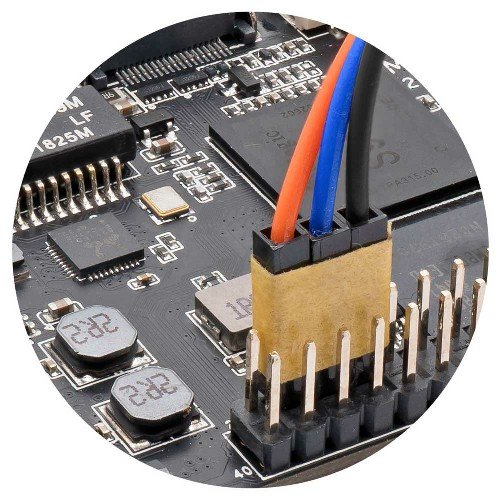Passive cooling with FreeBSD is not enough to reach and keep a cpu temperature of 50 C. So,I will try this new heat sink :
for sure it requires the radxa zero 3W with the gpio pin header expansion. Someone is using an heat sink like that ?
Passive cooling with FreeBSD is not enough to reach and keep a cpu temperature of 50 C. So,I will try this new heat sink :
for sure it requires the radxa zero 3W with the gpio pin header expansion. Someone is using an heat sink like that ?
I have the same issue, I installed Debian radxa-zero3_bookworm_kde_t1, and is super hot, and I cant touch the sbc, there is a solution to this? I agree with Mario, when you buy a product, it should work correctly.
Also I have the same heatsink from Radxa product.
I’m also interested to know what are the pins that I should use to attach the fans to the GPIO header…
HDMI output generates a lot of heat (GPU), and adding 1.6 GHz overclocking, you get a high temperature.
To fix this, use the passive heatsink + thermal paste + copper pad.
See the results here:
You could attach on (if operates 5v):
pin 4 -> +5.0V (red)
pin 6 -> GND (black)
or enable output pin 11 -> GPIO3_A1 to turn it on / off
pin 11 -> +3.3V (red)
pin 9 -> GND (black)
—> To fix this, use the passive heatsink + thermal paste + copper pad.
I did this on my board with FreeBSD installed. Temp goes from 70 to 60. Not enough for my taste.
I realized that the only method to go from 70 to at least 50,I should use an active cooling. And I found an heatsink that uses two fans. It should work.
—> or enable output pin 11 -> GPIO3_A1 to turn it on / off
pin 11 -> +3.3V (red)
pin 9 -> GND (black)
Can u post an image ? I’m not able to understand where are located pin 11 and pin 9 on the space without to see a picture.
Sorry,I don’t understand from the link you provided. It is too technical for me. I need a picture like this :

you should have bought with headers, anyway, same pin positions as RPi 2W (warning!, do it at your own risk):
That’s clear. Thanks.
—> warning !, do it at your own risk)
is it dangerous ? why ?
nothing to worry if you know what you’re doing…
Let us know Mario if the active cooling fan worked for you?
I was thinking to buy the zero pro 2 only because it’s seem have a better cooling system without the need to use active cooling
I have only the original Radxa Zero and I am surprised that it has a better performance, lower power consumption and even better CPU temperature than Raspberry Pi Zero 2W when running exactly the same application (50°C Radxa Zero, over 70°C Pi Zero2W) without any heatsink.
Ohhh I can’t buy it. It has a Amlogic A311D,not supported by FreeBSD…
Just confirming the Radxa heatsink for the Zero 3W is kind-a worthless. After monitoring / logging for a few days without and a few days with heat sync. Below are the results.
Without heat sync average CPU temp 140F / 60C, average CPU utilisation 6%
With heat sync average CPU temp 137F / 58.3V, average CPU utilization 6%
OS is Radxa Debian CLI with just about everything unnecessary stripped out, and just running my own service.
For reference, a Raspberry Pi 2w in the exact same setup is 134F / 56.6C (Running exact same SW, but Raspberry OS). CPU utilization was 5%
Using the configuration below my radxa does not exceed 60 C running with FreeBSD in idle and with a low load :
Never tested if I stress it a lot. yeah,can reach 70 C. I know that the only method to keep the temp all around 50 C is to use these ones :
https://forum.radxa.com/uploads/default/original/2X/6/6a3f600c92c312b8ac6b7144d1c9d60089014697.jpeg
but then the board becomes not usable for the FreeBSD based phone that I’m building.
No one saw a phone with two cooling active fans 